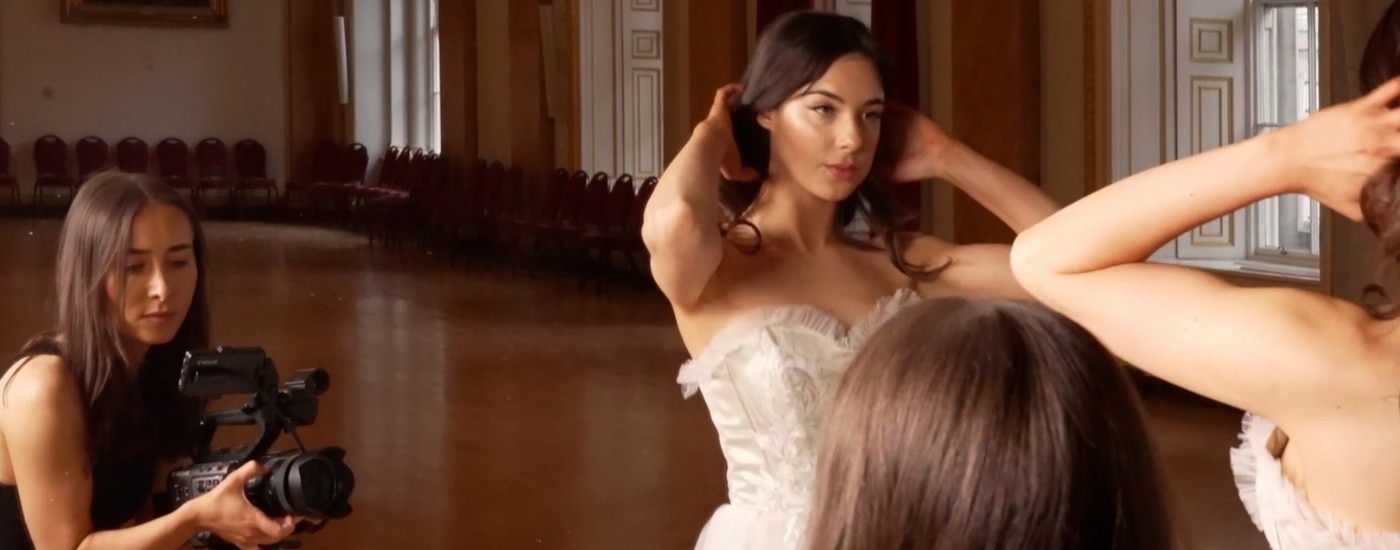
Jenny Alice shoots with FX6 and FE PZ 16–35 mm F4 G lens
Cinematic looks and practicality for wedding-themed video
Jenny Alice (@jennyalicefilms) is a freelance videographer who’s worked on everything from music videos to e-commerce content and product promos. Like most cinematographers, she usually shoots on fast prime lenses. So what did she make of the new Sony FE PZ 16–35 mm F4 G lens?
When it comes to the zooms vs primes debate, a lot of the conversation focuses on the practicalities of zooms against the speed and the ‘look’ of prime lenses. But Jenny Alice found that our FE PZ 16–35 mm F4 G lens may be an artistic bridge between the two camps.
“Some zoom lenses are, of course, slower than primes and give shots an ugly sharpness. There’s a worry that images will be quite sterile and flat. But this one had a lot of character and picked out all the detail really nicely. The images were crisp and quite cinematic.”
Shooting in the center of Liverpool, Alice put the lens to the test for a film she was making for a French fashion brand. Pairing the lightweight, compact FE PZ 16–35 mm F4 G with a Sony FX6 camera, she had a flexible, portable filming setup that was perfect for an intense day of shooting.
“When you’re shooting handheld, the stability of something bigger, like the FX9, is helpful. But I was shooting everything myself for this project, running around all over the place. Going with the FX6 was great, because I still had access to the professional features of the bigger cameras, just in a lightweight body.”
Texture and scale, without issue
With its wide angle, the lens was a natural choice for establishing shots—but it delivered far more than that. Alice chose historic buildings to provide a rich, textured backdrop to her filmmaking. Liverpool’s Town Hall provided some 18th-century glamor for interior scenes, while outdoor shots were captured in the square outside the impressive St George’s Hall.
The wide angle meant Alice was able to convey the scale of her historic surroundings without trouble. And because of the excellent pairing of the lens with the FX6’s superb low-light performance, she could capture all the architectural details she wanted—without spending extra budget on rigging and lighting inside.
There was no fringing, no vignetting, no chromatic aberration—even when I got in really close. That was very impressive. I could capture detail and texture without any problems.
One-woman camera crew
On a smaller shoot like this, there wasn’t the luxury of a focus puller. Obviously that doesn’t mean Alice wanted any slips in sharpness, and with so much movement in all of her work, autofocus is a must. Thankfully, the smooth autofocus on the G lens partnered neatly with the FX6, making it ideal for a leaner production.
In fact, the servo zoom meant that Alice was able to add some ‘dolly zoom’ shots to the project, when these might not have been possible shooting on her own. Working handheld for these shots also highlighted another benefit of this lens: its internal zoom.
With no change in the length of the lens, the camera’s center of balance doesn’t shift while zooming in or out. This means a filmmaker can keep their camera perfectly balanced, and setting up on a gimbal can therefore be quicker and simpler too.
“It seems like a small thing, but I also really liked that this lens isn’t convex like most wide-angles. It just means I can add filters onto it without any issue, and the same goes for matte boxes. The flat, stationary glass makes my life easier.”

Practical magic
One sequence (and feature) in particular stood out in Alice’s mind from the shoot: she had a dancer pirouetting on the spot, while she kept the camera still. Every time the dancer’s face came back into frame, the autofocus tracked her eyes and re-focused almost instantly. No matter how many times she span round, it would catch her eyes and sharpen the image.
“On the day, the incredibly smart autofocus was really useful. Actually, this lens made the entire shoot much more seamless. Its versatility more than made up for losing a few stops of light.”
Several sequences during the Liverpool shoot needed a longer zoom and Alice chose the added flexibility of our FE 24–105 mm F4 G OSS Lens. During the grade, she discovered that the colors, sharpness, and texture matched up perfectly with the 16–35 mm lens, making post-production much easier and saving time. From the moment the camera started rolling on location to the point she exported the final film, this 16–35 mm lens delivered what Jenny Alice needed and more.
“I got some lovely, really wide shots, without any of the fish-eye look you get with some lenses. There’s no warping. And as far as I’m concerned, internal zoom is the way forward: it’ll be hard to go back.”





